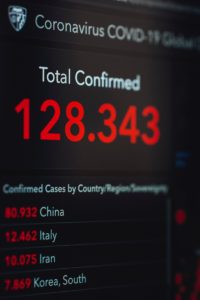
The healthcare sector continues to face a great deal of pressure as countries all over the world combat COVID-19. Here are a few examples of healthcare IT uses we’ve seen in response.
Managing coronavirus information, spread, and victims in our populations have caused plenty of healthcare IT uses to be put into practice. The healthcare sector continues to face a great deal of pressure as countries all over the world combat COVID-19. Problems associated with individual care and public health management during the coronavirus crisis are being addressed with existing and innovative healthcare IT. Here are just a few examples of what we’ve seen, and perhaps how these uses will impact healthcare IT moving forward.
Remote Care
Providing remote care to all types of patients at this time through telehealth and telemedicine has been immensely useful. Receiving medical advice or a virtual consultation puts people at ease because they can still get non-emergency medical attention while respecting social distancing guidelines. This type of care is accessible to many through a smart device and an internet connection. Remote delivery of care prevents putting healthcare workers and the people they can serve at unnecessary risk for exposure to COVID-19.
Automated Screening
Medical supplies and equipment aren’t the only things dwindling; healthcare workers’ attention remains divided and diverted to administering life-saving care to infected patients. When people suspect they are sick with COVID-19, hospitals are encouraging the use of automated screening programs to reduce the workload on doctors and other hospital staff. Smart and user-friendly screening programs can help patients and medical care teams identify coronavirus symptoms ahead of any potential visit, as well as to reduce the number of unnecessary visits in the first place.
Monitor Patients with Devices
Although less common in most hospitals across the country, robots can help with administering remote care to inpatient individuals with the highly contagious disease. Robotic surgeries can carry out complex procedures. Therefore, robotics can apply to comparatively simpler tasks, like taking vitals, temperature, and blood samples. Certain monitoring devices that help reduce in-person contact with infected patients can collect some of this information, such as heart rate and temperature, along with alerts from respiratory equipment.
Patterns and Predictions with Data
There are already healthcare IT uses in place that can use big data to model and predict disease transmission. The predictive capabilities go a long way in preparing sites for an influx of cases. Further, it can let public health officials find valuable information on how individuals are staying in place or not. Data analysis can help in another way, too. Softwares are being updated to recognize patterns for coronavirus symptoms in electronic health records. They can also identify risk factors, such as recent travel, to prompt more responsive alerts on isolation measures.
Healthcare IT Services and Solutions from Audley Consulting Group
The experts at Audley Consulting Group dedicate their passion and work to providing exceptional healthcare-centered IT services to our clients. Our consultants uncover your business needs to tailor an effective information technology solution that is unique to your situation. We proudly serve public and private sector clients in the Washington DC, Maryland, Virginia areas, and beyond. Audley Consulting group has delivered value-added IT services to businesses and government agencies. We can show how our healthcare IT services can benefit you too. To get started, call us at 301-770-6464, or visit our website. Follow us on Facebook, Twitter, and LinkedIn.